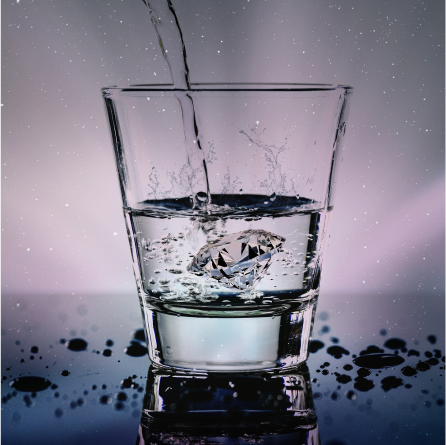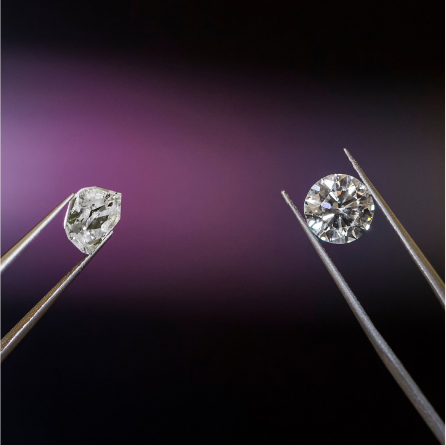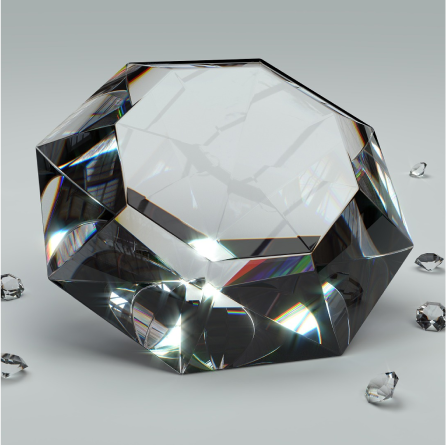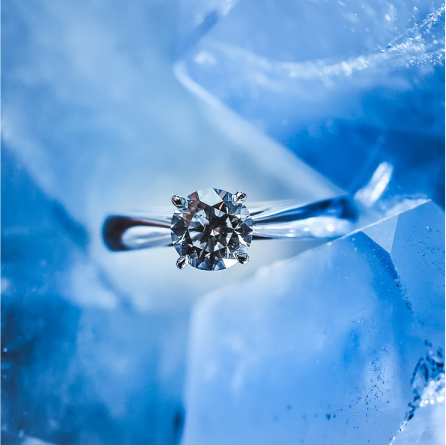GIA lab diamonds undergo a rigorous process to be graded, similar to that of natural GIA diamonds. Since 2007, GIA has graded lab diamonds with reference to GIA color, clarity and cut grade standards – with additional information as to whether the diamond is made via CVD or HPHT. However, instead of using terms like ‘VS2’ to accurately grade clarity, or ‘D’ to define color, GIA chooses to identify color and clarity with descriptive terms. Because of this, some people prefer to look at IGI certified lab diamonds, which use the global standard grading terms for color and clarity.
Both GIA and IGI laser inscribe a unique number on the girdle of the diamond (viewable under 50x magnification), which corroborates the unique number of its certification, where you’ll find the stone’s grading details. IGI add the words ‘lab grown’ alongside this laser inscription.







